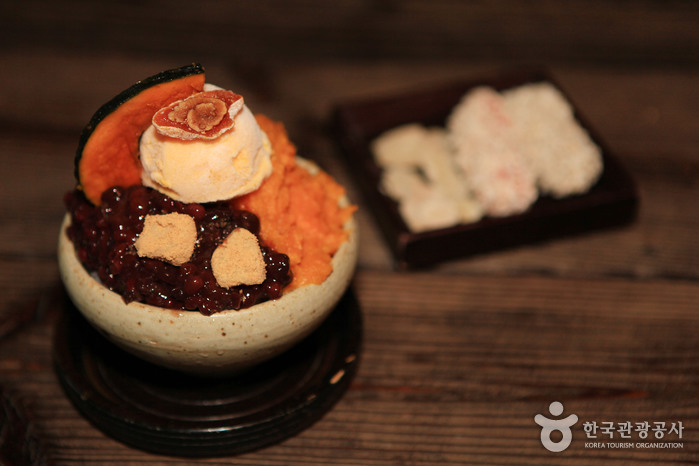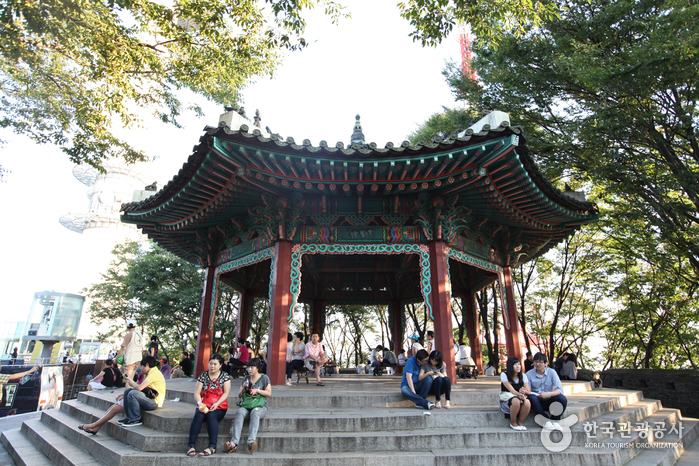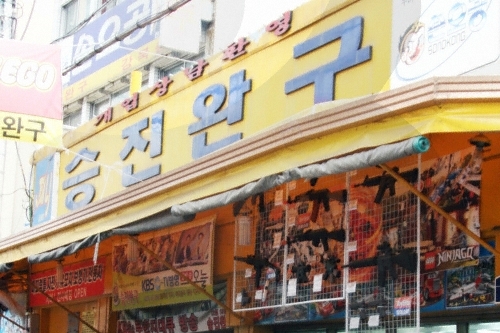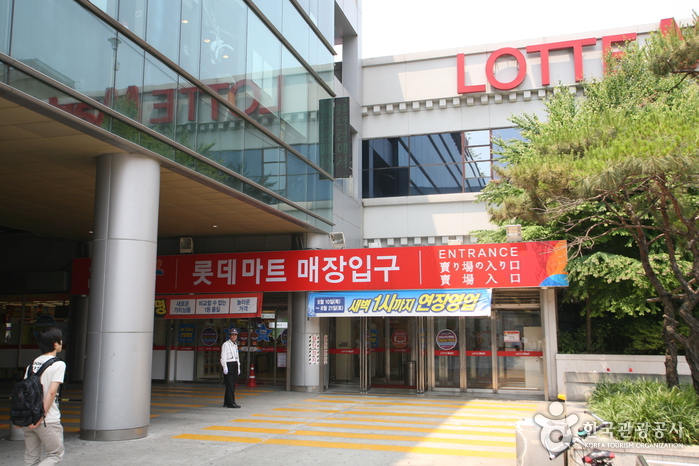HOTEL QB [Korea Quality] / 호텔큐비(호텔QB) [한국관광 품질인증]
2.4Km 2023-04-13
322-10, Jong-ro, Jongno-gu, Seoul
+82-10-2408-2842
Located just a three-minute walk away from the Dongdaemun Subway Station in Seoul, the hotel offers easy access for shopping and culture tour. Airport bus passes beside the building and Dongdaemun Shopping Complex, home to large shopping malls and wholesale fashion shops, are only a ten-minute walk away.
QB, which stands for boutiQue Business, reflects our commitment to guests on business trips with high-quality service and rooms. Customized trip consulting service is provided for those who are visiting without information; complimentary luggage storage service is also available.
Hotel QB has 21 rooms in total, ranging from single rooms for solo travelers to quad rooms for up to six persons. The rooms with modern and stylish interior design in pastel tone create cozier atmosphere. Internet is provided without charge in all rooms, and shared PCs are available in the shared kitchen. Guests may also cook for themselves as a microwave oven, an induction, a refrigerator, and kitchenware are available in the shared kitchen.
Neighboring tourist attractions such as Dongdaemun Shopping Complex are always busy with travelers. Dongdaemun Fashion Street, the trend-setting spot for the young, gets even livelier at night, whereas Dongdaemun Design Plaza (DDP) is famous for its night view. The night market, which opens on Friday and Saturday evenings, offers more things to eat and see. In addition, Dongdaemun History and Culture Park, Cheonggyecheon Second-hand Book Shop Street, and Dongmyo Flee Market are close to the hotel. Gwangjang Market, Jongmyo Shrine, and Daehakro Street are located one subway station away, which is also a walkable distance.
Suyeonsanbang (수연산방)
2.5Km 2016-12-16
8, Seongbuk-ro 26-gil, Seongbuk-gu, Seoul
Suyeonsanbang, a traditional Korean tea house located in Seongbuk-dong, was originally the house where the late Korean author Lee Tae-Jun wrote many of his books. Now, his estate has opened Suyeonsanbang’s doors to the public in the form of a charming and peaceful tea house. Famous for its savory tea, beautiful nature, and rich history, Suyeonsanbang has been covered by a variety of foreign media outlets like NHK (Japan), BBC (UK), French TV channels, and numerous Japanese magazines. To take a break during the summer heat, visitors come to Suyeonsanbang to try their patbingsu (shaved ice with red beans), one of its summer specialties. So come relax and be inspired in this traditional Hanok tea house.
Gare de Séoul (서울역)
2.5Km 2018-07-04
405, Hangang-daero, Yongsan-gu, Seoul
+82-2-1544-7788, +82-2-1588-7788
La gare de Séoul (Seoul Station) est la porte d’entrée pour Séoul, la capitale de la Corée du Sud. C’est le terminus de toutes les lignes Gyeongbu (Séoul – Busan) pour les trains KTX (Korea Train Express), Saemaul, Mugunghwa et Nooriro (trains écologiques). Elle est également reliée à l’aéroport international d'Incheon grâce à la ligne AREX (Airport Express).
La gare de Séoul compte le plus grand nombre de passagers en Corée, avec une moyenne de 100 000 passagers franchissant quotidiennement les portes du complexe de la gare, qui inclut le nouveau bâtiment achevé en 2003. On y trouve également le grand magasin Galleria et un supermarché Lotte.
Magasin d’usine Lotte Outlet - branche de la gare de Séoul (labellisé Korea Quality) (롯데아울렛 서울역점[한국관광품질인증/Korea Quality])
2.5Km 2020-04-09
405, Hangangdaero, Yonsan-gu, Séoul
+82-2-6965-2500
Présent à Séoul depuis août 2010, cette célèbre enseigne de la mode décontractée a récemment été rénovée. Elle abrite à présent la Fashion Company Shop (magasin multimarques), le « Hobby Square » (jouets pour les enfants et les adolescents), ainsi qu’un magasin d’usine, une boutique d’articles de voyage, une boutique de mode unisexe et bien d’autres surprises que l’on ne peut trouver qu’ici.
Le Musée des Ours en Peluche de la N Seoul Tower (테디베어박물관 - N서울타워)
2.5Km 2019-06-21
126, Namsangongwon-gil, Yongsan-gu, Seoul-si
+82-2-3789-8488
Le Musée des Ours en Peluche de Séoul est situé dans la N Seoul Tower, symbôle de la ville et endroit idéal pour y voir son paysage urbain.
Le musée présente des expositions retraçant l’histoire de Séoul à travers l’utilisation d’ours en peluche. Il s’agit d’une façon amusante et innovante pour les visiteurs de voir comment Séoul a changé et s’est développée avec le temps, à la fois en tant que capitale de la Corée du Sud et en tant que ville internationale. Les ours en peluche sont représentés dans des scènes recréant des évènements historiques aussi bien que des aspects divers de la vie séoulienne.
A la fin de la visite, les visiteurs peuvent apprécier une vue panoramique de la ville depuis l’Observatoire de la N Seoul Tower. Situé sur le point le plus élevé du mont Namsan, il offre une vue grandiose de Séoul.
Le pavillon de Namsan - 남산 팔각정
2.5Km 2021-06-19
Seoul, Yongsan-gu, Namsangongwon-gil 126
+82-2-3783-5900
Ce pavillon a été inauguré afin de célébrer le roi Lee Seung-man. Il se situe au sommet de Namsan et permet d'avoir une très belle vue panoramique de la capitale.
Seungjin Toy (승진완구)
2.5Km 2024-12-26
30, Jong-ro 52-gil, Jongno-gu, Seoul-si
+82-2-747-1900
Seungjin Toy Palace est un magasin spécialisé dans les jouets qui offre quasiment tous les jouets imaginables de l’animal en peluche au poupées et encore bien d’autres. Situé dans le « toy street » (la rue des jouets), Seungjin Toy Palace possède une des plus grandes sélections de jouets du pays. Ce qui le rend encore plus attractif pour beaucoup de consommateurs c’est que les produits y sont vendu en moyenne 30% moins chers que chez la concurrence.
Centre commercial de la mode Nuzzon (누죤패션몰)
2.5Km 2020-04-15
62, Eulji-ro 45-gil, Jung-gu, Seoul-si
+82-2-6366-3001
Situé à Dongdaemun, le point local des articles de mode à Séoul, le centre commercial Nuzzon, offre aux clients de nombreux articles comme des vêtements pour femmes et hommes, des chaussures, des sacs et des accessoires de mode. Les produits tendance attirent les détaillants du pays, les opérateurs de boutiques de mode en ligne, les célébrités, les personnes de l’industrie de la mode ainsi que les visiteurs coréens et internationaux. Une spacieuse aire de stationnement apportera du confort aux clients recherchant une place de parking dans ce quartier marchand animé. Des évènements colorés et des spectacles ont régulièrement lieu dans le centre commercial Nuzzon.
Lotte Mart (Gare de Séoul) (롯데마트-서울역점)
2.5Km 2019-01-10
432, Cheongpa-ro, Jung-gu, Seoul-si
+82-2-390-2500
Le Lotte Mart de la Gare de Séoul est situé comme son nom l'indique dans l'une des plateformes de transports les plus importantes de Corée. La Gare de Séoul abrite en effet le KTX (le TGV coréen), et d'autres types de trains, des bus, et stations de métro s'y rencontrent.
Le Lotte Mart vend de l'alimentation, des produits essentiels de la vie quotidienne, des articles de mode et bien d'autres.
Il est situé du second au quatrième étages du bâtiment et est ouvert de 10h à minuit.
Rue de la papeterie de Dongdaemun (동대문 문구거리)
2.5Km 2020-04-28
36, Jong-ro 52-gil, Jongno-gu, Seoul-si
+82-2-1330
La rue de la papeterie de Dongdaemun, créée dans les années 60, est composé de 120 papeteries et reste l’un des endroits les plus populaires pour ceux qui recherchent des articles à la fois mignons et fonctionnels. Ici, les visiteurs peuvent tout trouver : des cartes, des crayons, des pantoufles, des sacs à dos et des articles pour faire la fête à des prix 30 à 40 % moins élevés que la normal (- 50% pour certains produits). Ceux qui font des achats en vrac peuvent s’attendre à faire plus d’économies.
La rue de la papeterie de Dongdaemun est situé dans la zone commerciale de Dongdaemun près de la rivière Cheonggyechoen. Les boutiques de la rue sont ouvertes de 8h00 à 19h00, du lundi au samedi et sont fermées les dimanches et les jours de vacances.
![HOTEL QB [Korea Quality] / 호텔큐비(호텔QB) [한국관광 품질인증]](http://tong.visitkorea.or.kr/cms/resource/54/2634454_image2_1.jpg)


![Magasin d’usine Lotte Outlet - branche de la gare de Séoul (labellisé Korea Quality) (롯데아울렛 서울역점[한국관광품질인증/Korea Quality])](http://tong.visitkorea.or.kr/cms/resource/32/2652032_image2_1.jpg)



 Français
Français
 한국어
한국어 English
English 日本語
日本語 中文(简体)
中文(简体) Deutsch
Deutsch Español
Español Русский
Русский